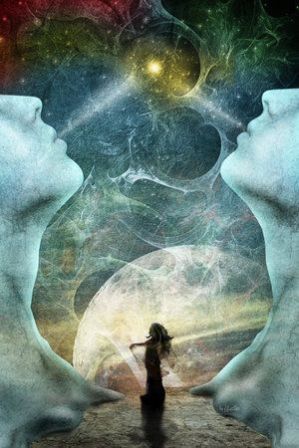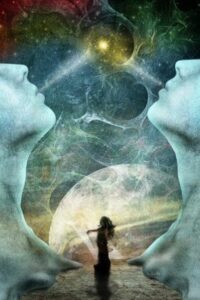Justina Lasley helps her clients understand the meaning of their dreams. The author and dream consultant believes dreams are storybooks written by the unconscious mind, and by interpreting them, she can help her clients make the necessary choices that will ultimately lead them to live a more spiritual or fulfilling life. She uses the technique of lucid—lucere in latin meaning “shine”—dreaming that allows individuals to dream while consciously awake. It is a co-created experience wherein dreamers direct themselves through the dreaming process without actually controlling it. Once they cross the boundary from conscious dreaming to conscious waking, she can identify the source of their trauma, and through talk therapy alleviate any suffering.
The act is meant to mitigate her client’s nightmares. Some cases are completely resolved, while others will only see their symptoms become less severe. The latter includes many Vietnam War veterans, most of whom suffer from Post Traumatic Stress Disorders (PTSD), a key symptom being post-traumatic nightmares.
The knowledge of nightmares and lucid experiences are extremely subjective and vary among individuals. We create nightmares from the raw materials of our own fears that affect our waking and dreaming lives. They are normally treated with sleep therapy, meditation, or scientific experiments at sleep laboratories. “If our physical bodies are influenced by events of the lucid state, then a consciously aware dreamer can heal his or her body in a lucid dream”, argues International Association for the Study of Dreams President Robert Waggoner.
His thirty years of research indicates that the lucid experience can end or mitigate recurrent nightmares associated with PTSD, and that “experienced lucid dreamers have reportedly healed themselves of physical ailments while lucidly aware.” It is a means to overcome anxiety and depression, as well as certain phobias, by directing sound energy, chants, or affirmations toward the client, and also, imagery creation, and talk therapy.
Curing himself of nightmares, the dream expert and author supports lucid dreaming as having “practical application for mental health, and possibly physical health,” adding “considerable value to the science of psychology.” He also thinks that lucid experiences can potentially revolutionize para-psychology, the individual ability to interact with the environment in ways not yet explained by science, and support theoretical physicists on their views of space and time.
Professor of psychology at Saybrook University in San Francisco, Dr. Krippner and his students have worked with hundreds of PTSD sufferers. He says that the nightmares “overwhelm their coping mechanism.” He has estimated, based on feedback, over fifty percent success rate among PTSD sufferers when he and a group of students introduce certain techniques like re-dreaming and excessive art. Re-dreaming allows patients to review their dream and give a different ending, to “resolve the dream,” while excessive art involves reworking their emotions. These techniques proved more successful than serotonin stimulators and antidepressants such as Zoloft and Prozac.
Despite the research and statistics lucid dreaming has yet to be considered a credible, licensed therapy. The reason, according to Lasley, is that psychologists don’t fully understand it. “Most psychologists are not trained in transpersonal psychology—meaning that no thought or action is separate from the body—which focuses on the mind-body-spirit connections,” she says.
Since transpersonal psychology attempts to describe and integrate spiritual aspects of the human experience—such as religious conversion and mysticism, altered states of consciousness and trance—within modern psychological theories, psychologists trained in clinical programs heavy with quantitative research, disregard healing possibilities behind lucid dreaming.
More importantly, psychiatrists, brain scientists and academics with a heavy science-oriented background view dream therapy as controversial for treatment of serious illnesses. Siding with conservative schools of thought to support their arguments with quantitative data, professors like Allan Hobson at Harvard University will not make any claims since no controlled study has been done.
He provides an explanation in his book, Dream Life, where he takes a scientifically biological rather than psychoanalytical approach to dream science, describing the functional and frontal splitting of the brain during lucid dreaming. He concludes that dreams—“a mental state that tells us something about our consciousness,” he says—are meaningful links between one state of the brain activated in Rapid Eye Movement (REM) sleep and another activated in waking state, which contradicts Freudian dream theories.
In contrast, a team of European scientists at Germany’s Max Planck Institute of Psychiatry have been successful in testing Lucid Dreaming Treatment (LDT) on patients suffering from chronic nightmares not related to PTSD. Randomly placing patients in two small control groups, they found that LDT is a useful alternative for patients not suffering from repetitive themes. However, the effects of LDT continues to be limited to nightmare evaluation, as there are no randomized control trials for PTSD patients, due to lack of funding, too few available scientists, and good alternatives.
Due to extensive empirical evidence, the treatment-of-choice for PTSD sufferers is Cognitive-Behavioral Treatment (CBT), points out team member Victor Spoormaker. Both Spoormaker and Lasley have knowledge of such trials showing effects of cognitive-behavioral therapy using techniques like imagery rehearsal to diminish nightmare frequency. However, Lasley firmly stands behind various lucid treatments, convinced of its therapeutic qualities and access to unconscious layers of information, that someday will cure her clients.
“There is a lot of power in dreams…a lot of things you can’t prove in life,” says Lasley, levels of awareness both writer Allen Edgar Poe and German theoretical physicist Wolfgang von Goethe once agreed upon and obsessed over. How much validity this all holds still remains to be explored by the scientific community.
Additional reporting by Eric Joseph Reitmeyer
The full featured article in RagMag December 2011 (PDF)
[issuu width=550 height=359 pageNumber=65 backgroundColor=%23222222 documentId=120109105339-ed6e98bde01746e7ace1d1e4f26dcb57 name=ragmag_december_2011 username=ragmag tag=chelsea%20davine unit=px id=f22e9772-4bf2-fc16-dc98-f6af0f5b6c7e v=2]






